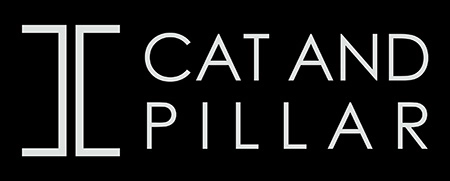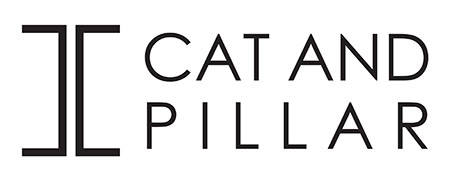Madrid Protocol Trademark Registration & Renewal Application
Contents
The Madrid Protocol
What Is It
The Madrid Protocol is a global system that allows specific businesses or individuals to obtain trademark protection across several countries and regions with one application. The trademark protection only covers businesses for countries and regions joined under the system.
It is an alternate route to international trademark registration, requiring businesses or individuals to file their trademark directly with the countries’ trademark office. Over 100 countries are currently members of the Madrid Protocol, with Singapore being one of them.
The Process
Pre-requisite: The Basic Application
-
Before filing a Madrid Protocol application, ensure that your home country is a member of the Madrid Protocol.
a. If you intend to file the trademark under your company, your home country would be the country where your company is incorporated.
b. If you are filing it under your personal capacity, it would be where you are a citizen or permanent resident.
c. For an updated list of member countries, please click here.
-
File a trademark application with the trademark office in your home country. This is known as the basic application.
The Madrid Protocol Application
-
File your Madrid Protocol application with your home country. The cost of the application depends on the number of classes in your application and the countries where protection is sought.
-
The trademark office will examine your Madrid Protocol application for formality matters before it is forwarded to WIPO.
-
WIPO will examine the application before it is forwarded to the respective trademark offices of the countries chosen.
-
The trademark offices will examine the application based on their individual standards. Some offices may object to your application, while others may accept it.
-
For countries where your application has been objected to, you will need to respond to them individually. The office will usually require you to have an address in that country or appoint a local agent to represent you.
| Direct Route | Madrid Protocol |
|---|---|
| Assumption | |
As each country has different processes and requirements for filing a trademark, doing so by oneself can be extremely difficult. For this comparison, we shall assume that an agent, such as Cat and Pillar, is used for the trademark applications via this route. |
The Madrid Protocol allows you to file your trademark with multiple trademark offices with a single application form with minimum requirements to fulfil. As such, we shall assume that you are filing the Madrid Protocol application with no agent. |
| Duration | |
Faster registration process in general as the applications are directly filed with the respective trademark office. For some countries, this can be as quick as 2 to 3 months. |
Slower registration process in general as the applications are first examined by the trademark office in the home country, followed by WIPO, before they are finally forwarded to the respective trademark offices for further examination. This could easily lengthen the process by 6 months to a year. |
| Time Limit | |
No time limit to processing your registration. |
Trademark offices need to raise any objection to your application within 18 months of receiving it from WIPO. Your trademark will be automatically considered registered if they fail to do so. |
| Duration | |
Faster registration process in general as the applications are directly filed with the respective trademark office. For some countries, this can be as quick as 2 to 3 months. |
Slower registration process in general as the applications are first examined by the trademark office in the home country, followed by WIPO, before they are finally forwarded to the respective trademark offices for further examination. This could easily lengthen the process by 6 months to a year. |
| Cost Effectiveness | |
Higher application fees when applying to four or more countries. However, it is easier to avoid objections via this route as agents can customise your application for each country. As such, it is expected to incur lower additional costs after application. |
Lower application fees when applying to 4 or more countries. However, objections are more likely, unless you put in the work to customise and check the application for each country selected. It is expected to incur higher additional costs after application, including the fee of appointing agents to deal with the objections. |
| Need for translation | |
Applications need to be translated for countries where English is not the official language. |
The application can be filed entirely in English. No translation is needed. |
1. Assumption
Direct Route
As each country has different processes and requirements for filing a trademark, doing so by oneself can be extremely difficult.
For this comparison, we shall assume that an agent, such as Cat and Pillar, is used for the trademark applications via this route.
Madrid Protocol
The Madrid Protocol allows you to file your trademark with multiple trademark offices with a single application form with minimum requirements to fulfil.
As such, we shall assume that you are filing the Madrid Protocol application with no agent.
2. Time Limit
Direct Route
No time limit to receiving your registration.
Madrid Protocol
Trademark offices need to raise any objection to your application within 18 months of receiving it from WIPO.
Your trademark will be automatically considered registered if they fail to do so.
3. Duration
Direct Route
Faster registration process in general as the applications are directly filed with the respective trademark office. This can be as quick as 2 to 3 months for some countries.
Madrid Protocol
Slower registration process in general as the applications are first examined by the trademark office in the home country, followed by WIPO, before they are finally forwarded to the respective trademark offices for further examination.
This could easily lengthen the process by six months to a year.
4. Cost Effectiveness
Direct Route
Higher application fees when applying to 4 or more countries.
However, it is easier to avoid objections via this route as agents can customise your application for each country. As such, it is expected to incur lower additional costs after application.
Madrid Protocol
Lower application fees when applying to 4 or more countries.
However, objections are more likely, unless you put in the work to customise and check the application for each country selected. It is expected to incur higher additional costs after application, including the fee of appointing agents to deal with the objections.
5. Need for Translation
Direct Route
Applications need to be translated for countries where English is not the official language.
Madrid Protocol
The application can be filed entirely in English. No translation is needed.
Verdict
On the surface, the Madrid Protocol seems like a more convenient route for international trademark protection. However, many underlying costs and delays in the process may only surface later on.
Cat and Pillar recommends filing your trademarks via the direct route for most cases. However, we may recommend the Madrid Protocol route when it is suitable, on a case-by-case basis.
Other Services
In addition to trademark application and renewal, we can assist you in other matters relating to your trademark, including:
• responding to objections from the IP office
• amending details in your trademark application
• assigning your trademark to a third party
Contact Us
If you wish to learn more about the Madrid Protocol or our other services or are looking for help to file a Madrid Protocol application or renewal in Singapore, please do not hesitate to contact us.


